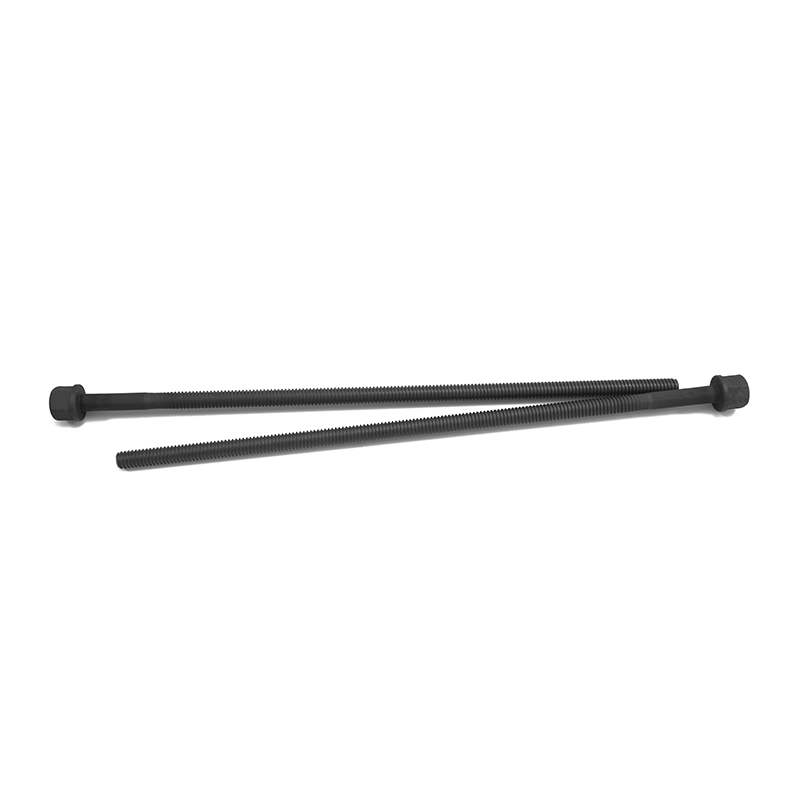The performance of a trapezoidal lead screw under dynamic loads versus static loads is influenced by several factors, including the material properties, thread geometry, lubrication, and the design of the system. Understanding how these screws behave under different loading conditions is critical for ensuring their reliability and longevity in various applications. Here's a detailed breakdown:
Static Load Performance:
Definition: Static loads refer to forces that are applied gradually or remain constant over time without significant movement or vibration.
Performance Characteristics:
Load Capacity: Trapezoidal lead screws are generally well-suited for handling high static loads due to their robust thread profile and ability to distribute force evenly across the threads. The trapezoidal shape provides a large contact area between the screw and nut, which enhances load-bearing capacity.
Deformation Resistance: Under static loads, the screw and nut are less likely to experience deformation because the forces are steady and predictable. However, excessive static loads can still cause permanent deformation (e.g., thread flattening) if the load exceeds the material's yield strength.
Friction and Wear: Since there is no relative motion between the screw and nut under purely static conditions, friction and wear are minimal. However, prolonged exposure to high static loads can lead to creep (slow deformation over time), especially in softer materials like polymers.
Dynamic Load Performance:
Definition: Dynamic loads involve forces that vary over time, including cyclic, impact, or vibratory forces, as well as forces generated during motion (e.g., acceleration, deceleration).
Performance Characteristics:
Load Capacity: While trapezoidal lead screws can handle dynamic loads, their capacity is typically lower than under static conditions. This is because dynamic loads introduce additional stresses such as fatigue, vibration, and heat generation, which can reduce the screw's effective load-bearing capability.
Fatigue and Wear: Under dynamic conditions, the repeated motion between the screw and nut leads to wear and fatigue . Over time, this can result in increased backlash, reduced precision, and eventual failure of the system. Proper lubrication and material selection are critical to mitigating these effects.
Friction and Heat Generation: Dynamic loads generate higher levels of friction between the screw and nut, which can lead to heat buildup. Excessive heat can degrade lubricants, accelerate wear, and potentially damage the materials. Self-lubricating nuts (e.g., polymer or bronze composites) can help reduce friction and extend the life of the system.
Vibration and Noise: Trapezoidal lead screws are more prone to vibration and noise under dynamic loads compared to ball screws, which have rolling elements that reduce friction. This can be mitigated by using dampers, preloaded nuts, or optimizing the system's design for smoother operation.

Factors Affecting Performance Under Dynamic Loads:
a. Material Selection:
Screw Material: Hardened steel screws are preferred for dynamic applications because they resist wear and fatigue better than softer materials. Stainless steel may be used for corrosion resistance but is typically less durable under high dynamic loads.
Nut Material: Polymer nuts (e.g., POM, nylon) are lightweight and self-lubricating, making them suitable for low to moderate dynamic loads. Bronze nuts are more durable and better suited for higher dynamic loads but require regular lubrication.
b. Lubrication:
Proper lubrication is critical for reducing friction and wear under dynamic conditions. Dry-running systems or inadequate lubrication can lead to premature failure.
Some systems use self-lubricating nuts made from composite materials to minimize maintenance requirements.
c. Speed and Acceleration:
Higher speeds and rapid accelerations increase the dynamic forces acting on the screw, leading to greater wear and heat generation. Trapezoidal lead screws are generally not as efficient as ball screws at high speeds, so their use in high-speed applications should be carefully evaluated.
d. End Support and Alignment:
Proper end support (e.g., fixed-fixed or fixed-floating configurations) is essential to prevent bending or buckling of the screw under dynamic loads. Misalignment can exacerbate wear and reduce the system's lifespan.
Applications and Suitability:
a. Static Load Applications:
Trapezoidal lead screws excel in applications where the load is primarily static or changes infrequently, such as:
Clamping mechanisms (e.g., vises, presses).
Positioning systems that hold a fixed position for extended periods.
Lifting systems with minimal movement (e.g., jacks, lifts).
b. Dynamic Load Applications:
While trapezoidal lead screws can handle dynamic loads, they are better suited for moderate-speed and moderate-load applications, such as:
CNC machines (low to medium speed).
3D printers (where precision is more important than speed).
Medical devices requiring smooth and controlled motion.
For high-speed or high-dynamic-load applications, ball screws or roller screws may be more appropriate due to their higher efficiency and lower friction.


 English
English 中文简体
中文简体 Español
Español русский
русский عربى
عربى







